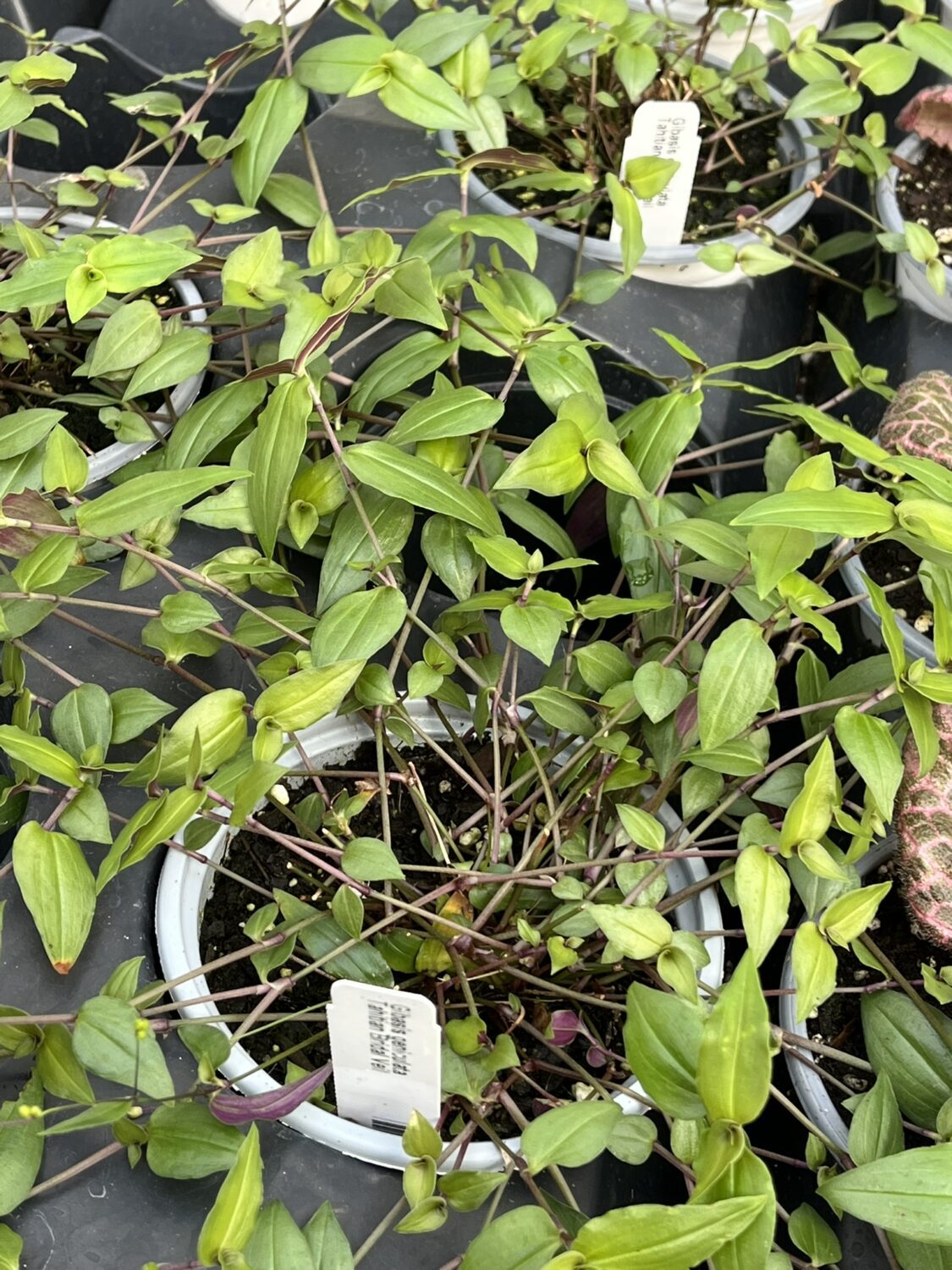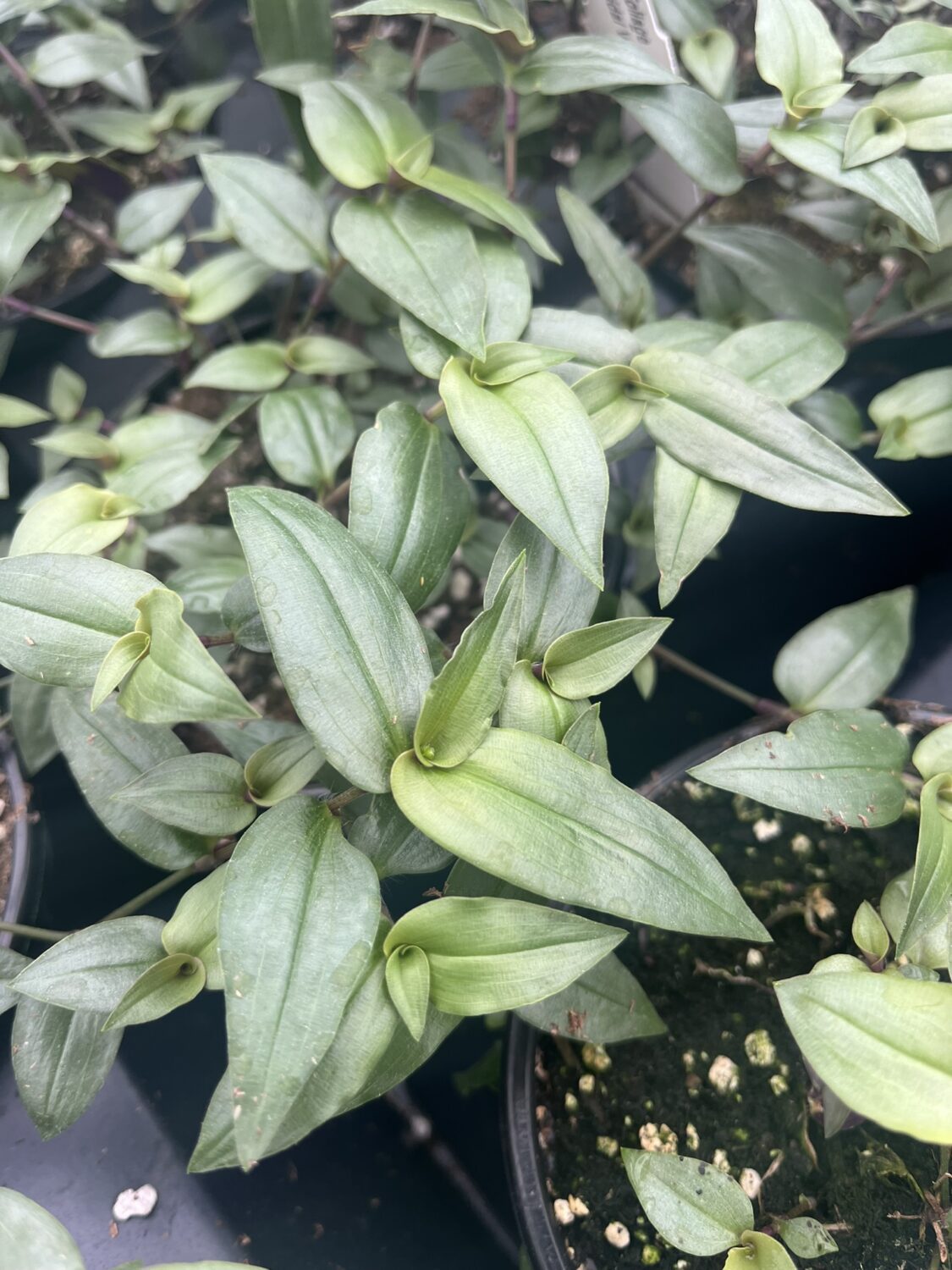Gibasis geniculata ‘Tahitian Bridal Veil’
Price range: $5.99 through $19.99
Hardiness Zone 9+
Discount per quantity
| Quantity | 3 - 8 | 9 - 14 | 15+ |
|---|---|---|---|
| Price | Price range: $5.81 through $19.39 | Price range: $5.63 through $18.79 | Price range: $5.39 through $17.99 |
| % Discount | 3% | 6% | 10% |
Description
Gibasis geniculata ‘Tahitian Bridal Veil’: A Delicate, Graceful Beauty for Your Indoor and Outdoor Spaces
The Gibasis geniculata, better known as ‘Tahitian Bridal Veil,’ is a plant with a name as romantic as its look. With trailing stems covered in tiny green leaves and sprinkled with delicate white flowers, this plant feels soft, airy, and elegant. It’s easy to see why gardeners and houseplant lovers adore it. Whether cascading from a hanging basket indoors or flowing gracefully over a garden wall, it turns any space into something special.
In this guide, we’ll explore what makes the Tahitian Bridal Veil so enchanting, why it’s such a versatile choice, and exactly how to care for it. By the end, you’ll feel confident growing and styling this graceful plant in your own home or garden.
Why Choose the Tahitian Bridal Veil?
A Look of Effortless Elegance
Few plants match the soft beauty of the Tahitian Bridal Veil. The stems trail like ribbons, covered in tiny oval leaves that shimmer between green and a hint of purple underneath. Tiny white flowers appear like stars scattered across a night sky, giving the plant its dreamy “veil” effect. This flowing habit makes it ideal for hanging baskets, wall planters, or elevated shelves where the vines can spill down naturally.
Compact but Lush
This plant doesn’t grow tall, but its dense, trailing habit quickly creates a full and layered display. Even a small basket looks abundant once the vines start to drape. It’s a clever choice for adding impact without taking up floor space, especially in smaller homes or patios.
Easygoing Nature
Despite its delicate look, the Tahitian Bridal Veil is surprisingly forgiving. It thrives in a range of light levels, tolerates occasional neglect, and doesn’t demand constant fussing. This makes it a perfect choice for beginners, busy plant parents, or anyone who wants beauty without high effort.
Indoors or Outdoors
Another reason for its popularity? Versatility. Indoors, it softens rooms and brings nature close. Outdoors, it performs beautifully in shaded garden beds, patios, and balconies. In warm climates, it can even serve as a graceful ground cover beneath trees or around garden edges.
Growing and Caring for Tahitian Bridal Veil
While this plant is low-maintenance, knowing its preferences will help it truly thrive. Let’s break down the essentials.
Light Requirements
The Tahitian Bridal Veil loves bright, indirect light. It can handle some shade, but better light means richer leaf color and more flowers. Avoid intense direct sunlight, which can scorch the foliage.
-
Indoors: Place near an east- or west-facing window. A sheer curtain helps filter light if needed.
-
Outdoors: Choose a dappled shade spot, such as under trees, a pergola, or on a covered porch.
Watering
This plant likes consistently moist soil but hates sitting in water. The key is balance.
-
Spring and Summer: Water when the top inch of soil feels slightly dry. Keep it moist but not soggy.
-
Fall and Winter: Reduce watering as growth slows. Let the soil dry a bit more between waterings.
Tip: Always use pots with drainage holes to prevent root rot.
Humidity and Temperature
As a tropical plant, Tahitian Bridal Veil thrives in warmth and humidity.
-
Temperature Range: 60–85°F (15–29°C)
-
Humidity: Moderate to high. If indoor air is dry (especially in winter), use a pebble tray, room humidifier, or group plants together.
Soil and Potting
A well-draining potting mix is best. A standard houseplant mix works fine, but adding perlite or coarse sand improves drainage and prevents soggy roots.
-
Repotting: Every 1–2 years, or when roots peek through the pot’s drainage holes. Spring is ideal for repotting, as the plant enters its active growth phase.
Fertilizing
Feed regularly during the growing season for the lushest growth.
-
What to Use: A balanced, water-soluble fertilizer.
-
How Often: Every 4–6 weeks in spring and summer. Skip or reduce feeding in fall and winter.
Pruning
Pruning keeps the plant full and bushy instead of stringy.
-
How to Prune: Trim back long, leggy vines and pinch tips to encourage branching.
-
Remove Damage: Cut away yellowing or dead leaves to keep the plant fresh and tidy.
Propagating: Multiply the Beauty
Propagation is simple and rewarding. The Tahitian Bridal Veil roots easily from cuttings, so you can create new plants to share or fill more baskets.
Step-by-Step Propagation
-
Choose a Healthy Stem
Look for a strong, undamaged vine with vibrant leaves. -
Take a Cutting
Use clean scissors to cut a 4–6 inch piece just below a leaf node. -
Prepare the Cutting
Remove the lower leaves, leaving two or three at the top. -
Rooting Methods
-
Water Method: Place the cutting in water with the node submerged. Change the water every few days.
-
Soil Method: Plant the cutting in moist potting mix, burying the node just below the surface.
-
-
Provide Bright, Indirect Light
Keep the environment warm and slightly humid. -
Transplant
When roots are about 1–2 inches long (in water) or new growth appears (in soil), pot it into fresh soil.
Common Problems and Solutions
Even low-maintenance plants have occasional challenges. Here’s how to troubleshoot:
1. Yellowing Leaves
Cause: Overwatering or poor drainage
Solution: Let soil dry slightly between waterings and ensure the pot drains properly.
2. Sparse Growth
Cause: Insufficient light
Solution: Move to a brighter location with filtered sunlight.
3. Wilting or Drooping Stems
Cause: Underwatering or low humidity
Solution: Water thoroughly and raise humidity levels with misting or a humidifier.
4. Pests
Common pests include aphids, spider mites, and whiteflies.
Solution: Treat with insecticidal soap or neem oil. Isolate the plant to prevent spreading.
Styling and Design Ideas
The Tahitian Bridal Veil is as much about style as it is about care. Its cascading vines make it perfect for creative displays.
Hanging Baskets
The classic choice. Let the vines drape dramatically from a hanging basket indoors or on a covered patio for maximum visual impact.
Mixed Planters
Pair it with other tropicals—ferns, calatheas, or philodendrons—for a lush, layered arrangement. The fine texture of the Bridal Veil contrasts beautifully with broader-leaved companions.
Ground Cover
In frost-free climates, use it as a ground cover for shaded garden beds. It fills spaces softly and creates a natural, romantic feel.
Tabletop or Shelf Accent
For a softer indoor touch, place it in a decorative pot on a high shelf or table edge so vines can trail downward gracefully.
Tahitian Bridal Veil and Feng Shui
In Feng Shui, plants with flowing, cascading shapes are thought to encourage the flow of positive energy. The Tahitian Bridal Veil, with its soft vines and gentle blooms, is ideal for creating harmony and calm in living spaces. Placed near entryways or windows, it’s believed to invite fresh energy into the home.
Tips for Year-Round Success
-
Rotate the plant occasionally for even growth.
-
Trim regularly to maintain fullness.
-
Protect from frost if grown outdoors. Bring inside when temperatures drop below 55°F (13°C).
-
Refresh the soil yearly by top-dressing with fresh potting mix, even if not repotting.
A Living Veil of Beauty
The Gibasis geniculata ‘Tahitian Bridal Veil’ is more than a plant—it’s a living piece of art. Its gentle cascades and starry blossoms bring grace and serenity to any space, indoors or out. And despite its refined appearance, it’s wonderfully low-maintenance. With a little light, regular water, and occasional pruning, it will reward you with lush growth all year long.
Whether you’re decorating a cozy apartment, brightening a shady patio, or designing a layered tropical garden, this plant adapts beautifully. It’s perfect for beginners who want an easy win and equally rewarding for experienced plant lovers who appreciate fine detail.
Bring a Tahitian Bridal Veil into your home or garden, and watch as it softens edges, lifts moods, and creates moments of calm beauty in your everyday life.
Additional information
| Weight | N/A |
|---|---|
| Dimensions | N/A |
| Options | Unrooted Cutting – 9 Count, Starter Plug – 3 count, 4 in. (16.9 fl. oz.) Pot, 6 in. Hanging Basket (1 qt) |






